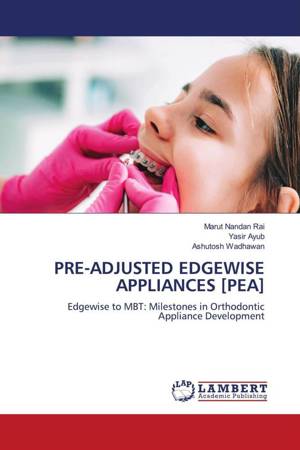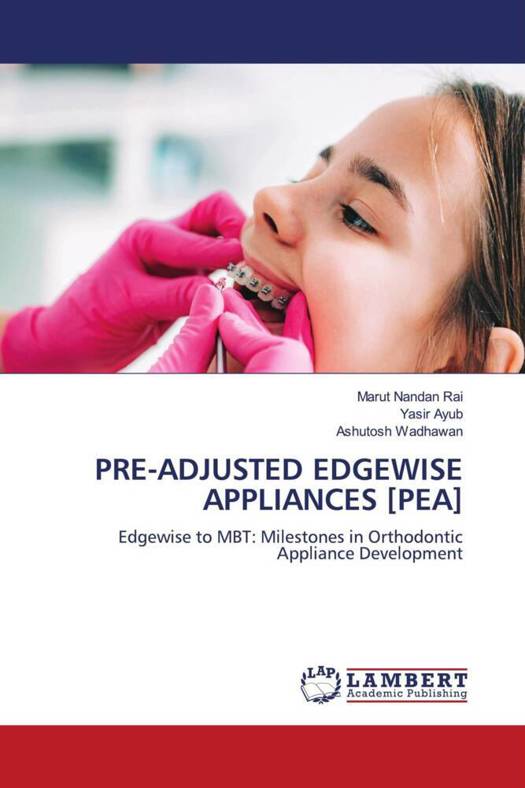
- Afhalen na 1 uur in een winkel met voorraad
- Gratis thuislevering in België vanaf € 30
- Ruim aanbod met 7 miljoen producten
- Afhalen na 1 uur in een winkel met voorraad
- Gratis thuislevering in België vanaf € 30
- Ruim aanbod met 7 miljoen producten
PRE-ADJUSTED EDGEWISE APPLIANCES [PEA]
Edgewise to MBT: Milestones in Orthodontic Appliance Development
Marut Nandan Rai, Yasir Ayub, Ashutosh Wadhawan
Paperback | Engels
€ 43,45
+ 86 punten
Omschrijving
Orthodontics has undergone a remarkable evolution in fixed appliance therapy since the pioneering contributions of Edward H. Angle, who introduced the edgewise appliance in 1925. This innovation enabled comprehensive three-dimensional control of tooth movement and established the foundation for modern mechanotherapy. Subsequent decades witnessed refinements by Tweed, Holdaway, and Strang, focusing on anchorage preparation and wire-bending techniques.A paradigm shift occurred with Lawrence F. Andrews' Straight Wire Appliance (1970), which incorporated the Six Keys to Normal Occlusion into bracket design. By pre-programming torque, angulation, and in-out values into individual brackets, Andrews significantly reduced the need for extensive archwire bending. The straight wire concept was later enhanced through Roth's prescription, which emphasized overcorrection, gnathological principles, and the use of Tru-Arch forms to improve functional stability.In the 1990s, McLaughlin, Bennett, and Trevisi (MBT) introduced a third-generation system tailored to light, continuous forces and sliding mechanics.
Specificaties
Betrokkenen
- Auteur(s):
- Uitgeverij:
Inhoud
- Aantal bladzijden:
- 72
- Taal:
- Engels
Eigenschappen
- Productcode (EAN):
- 9786202190145
- Uitvoering:
- Paperback
- Afmetingen:
- 150 mm x 220 mm

Alleen bij Standaard Boekhandel
+ 86 punten op je klantenkaart van Standaard Boekhandel
Beoordelingen
We publiceren alleen reviews die voldoen aan de voorwaarden voor reviews. Bekijk onze voorwaarden voor reviews.









